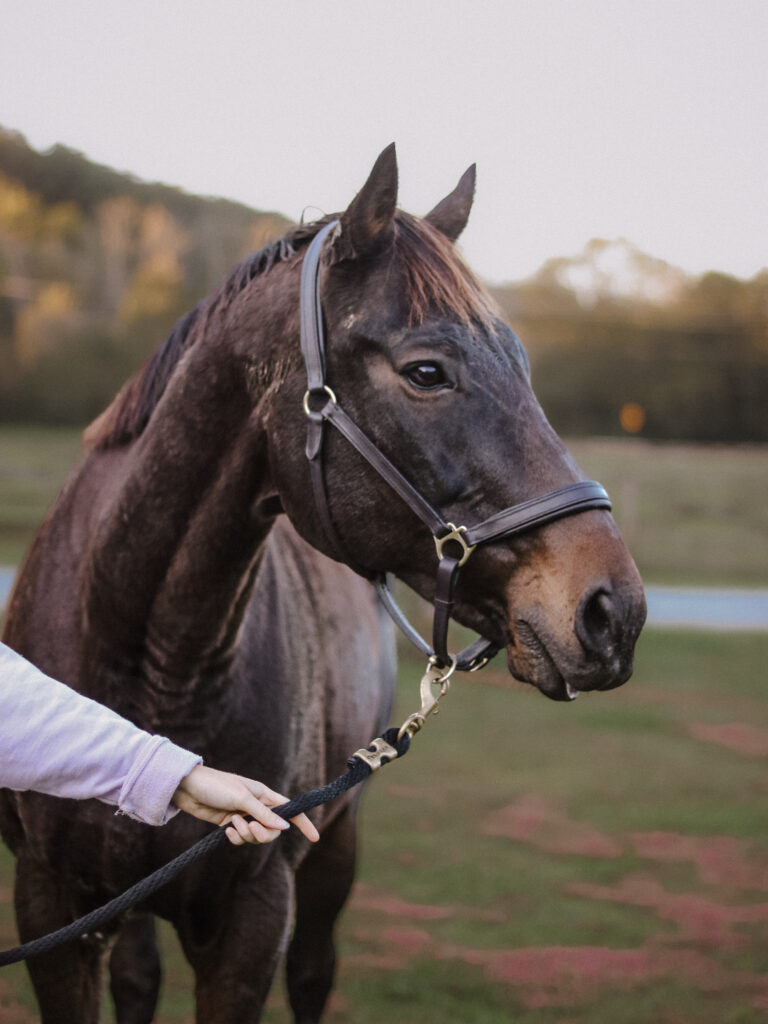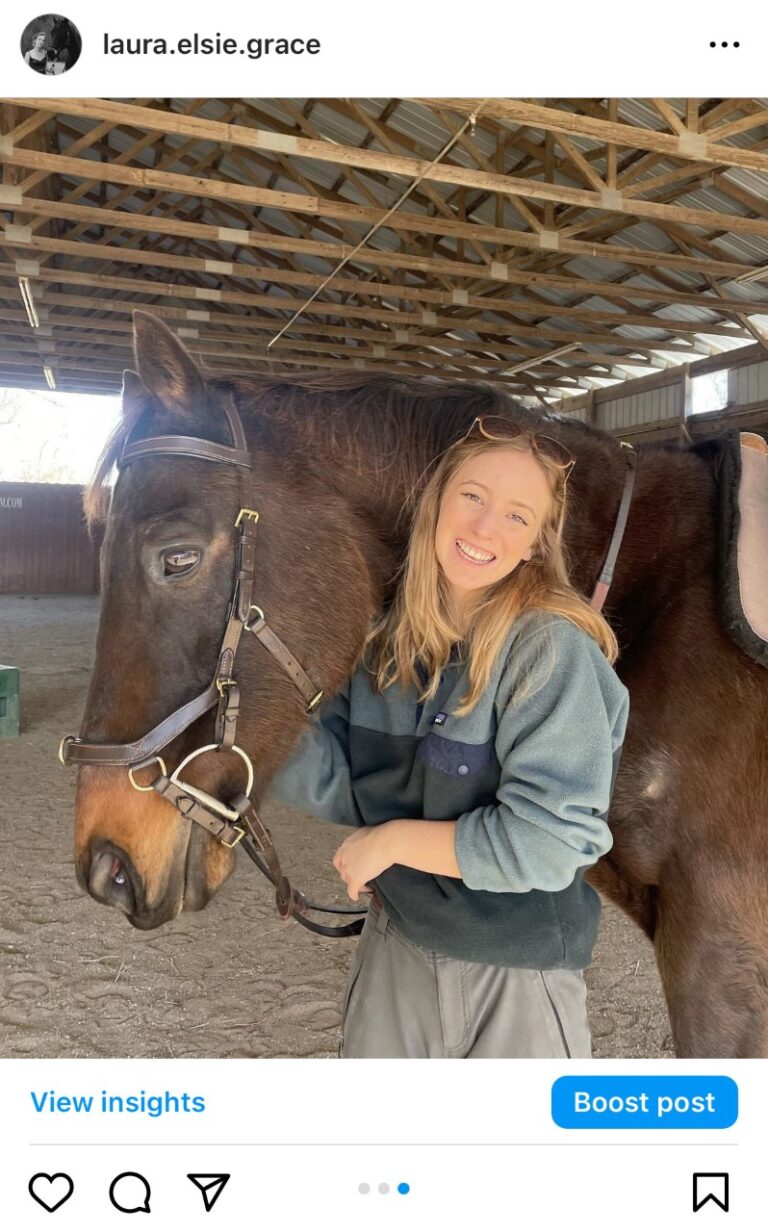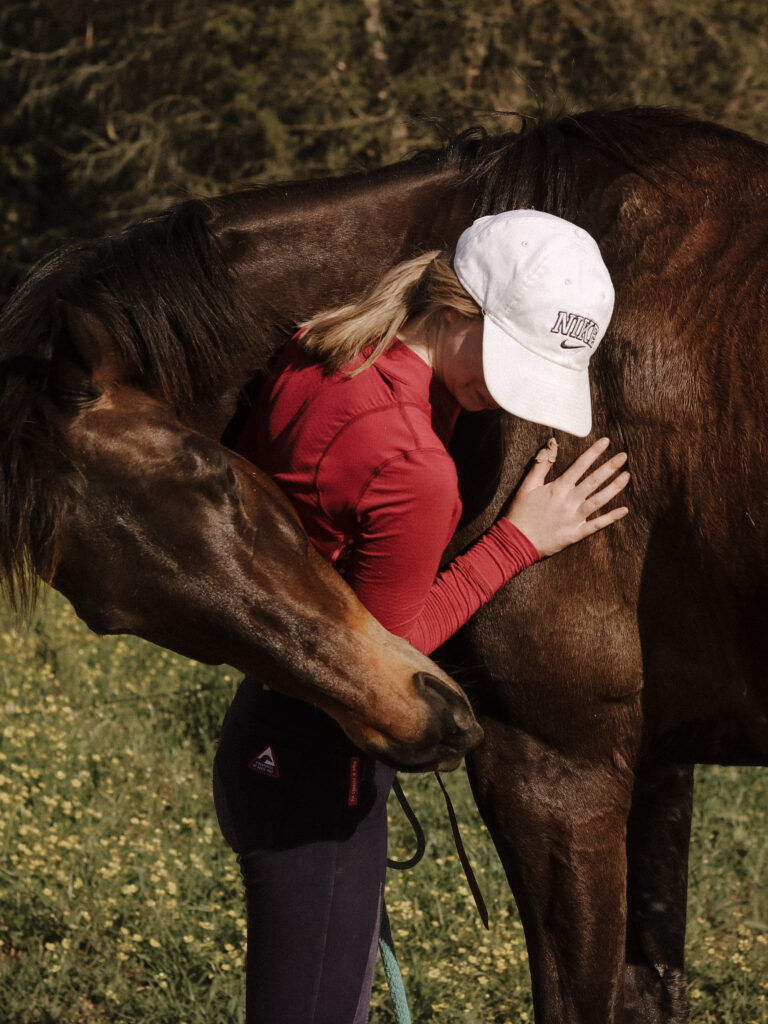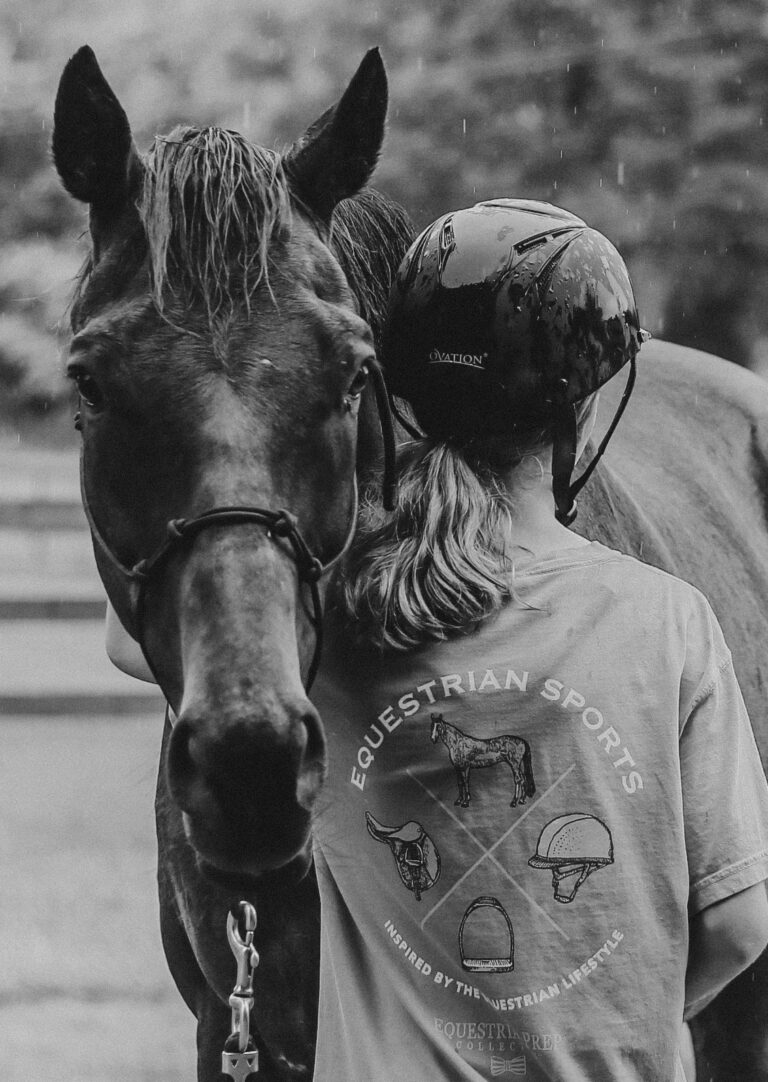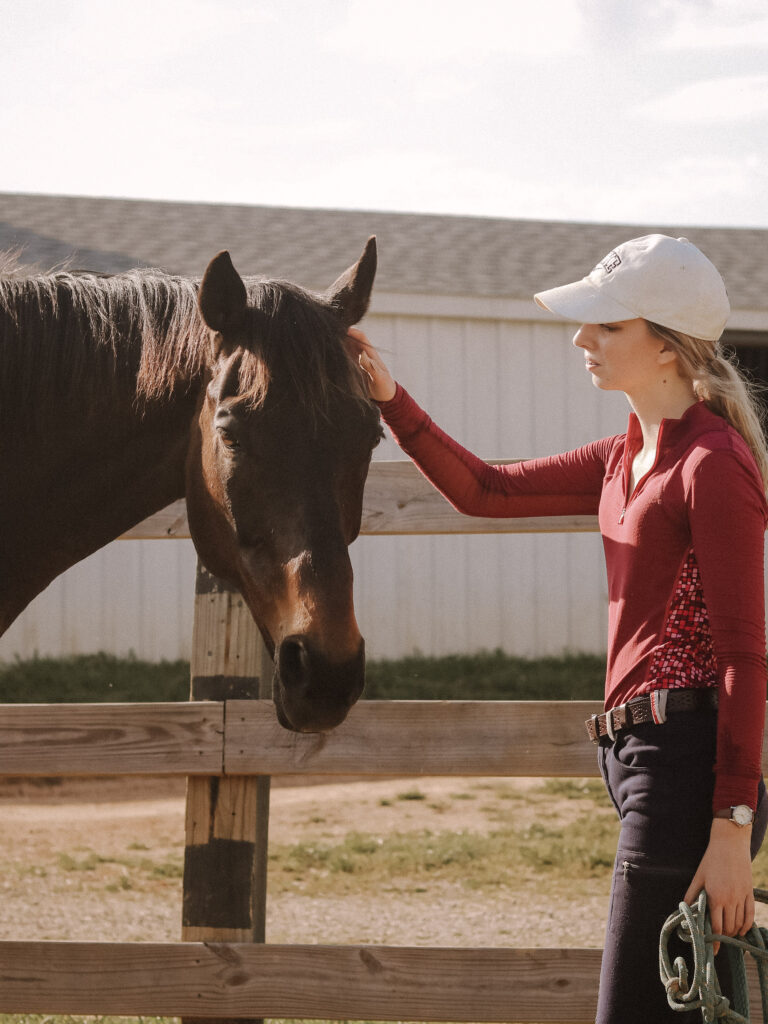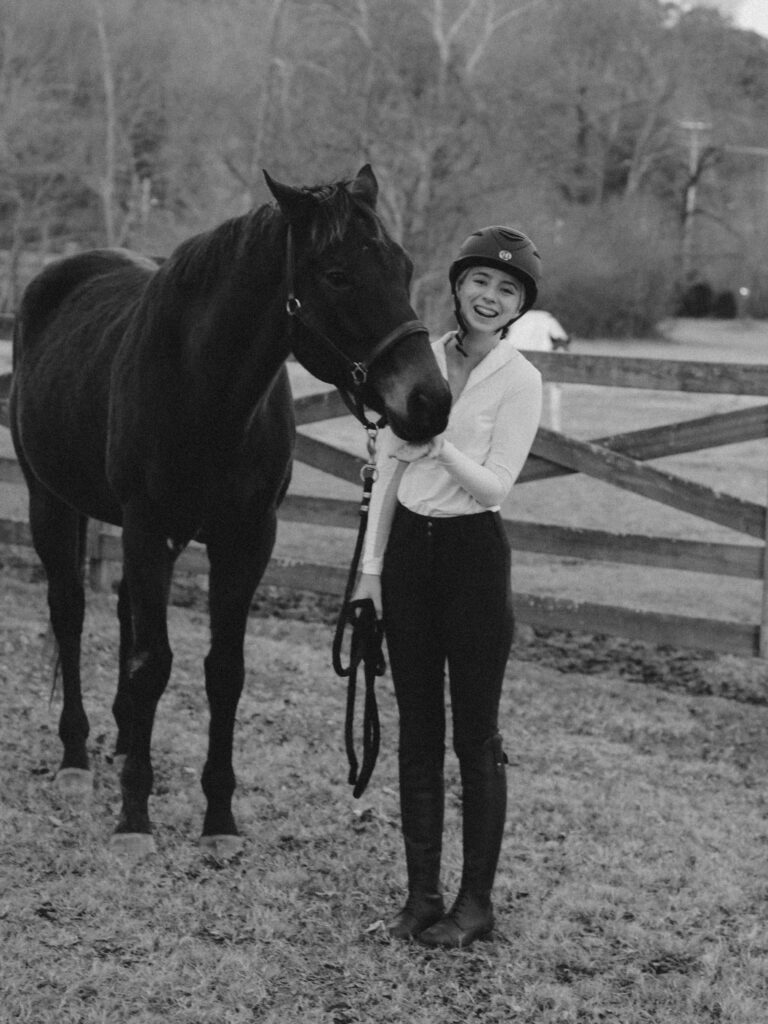How to Prepare Your Horse for Winter!
Between not being able to move your fingers and toes, mud-caked ponies, and frozen water buckets, winter is a long, drawn-out season. In this post, I’ll be talking about how to prepare your horse for winter!
Ahh yes, winter. The time of the year where the only upside is that you get to pet exceptionally fluffy ponies. While there’s no getting around scraping mud off of your boots every 5 minutes, there are definitely ways to make everyday life a little less pesky in the cold, winter seasons.
It was January 2021: I grabbed my horse, Theo, then brought him down to the barn to prepare for a lesson with my brand new instructor. To my demise, Theo’s tail was COVERED in rock-solid ice. Now, he already has a sorry excuse for a tail… but this was just sad.
Unfortunately, my barn doesn’t have hot water and there was no lessoning with his tail like that. So I not-so-willingly grabbed a trusty pair of scissors and got to work. Try not to cringe too hard, but I ended up cutting several inches off – painful, to say the least.
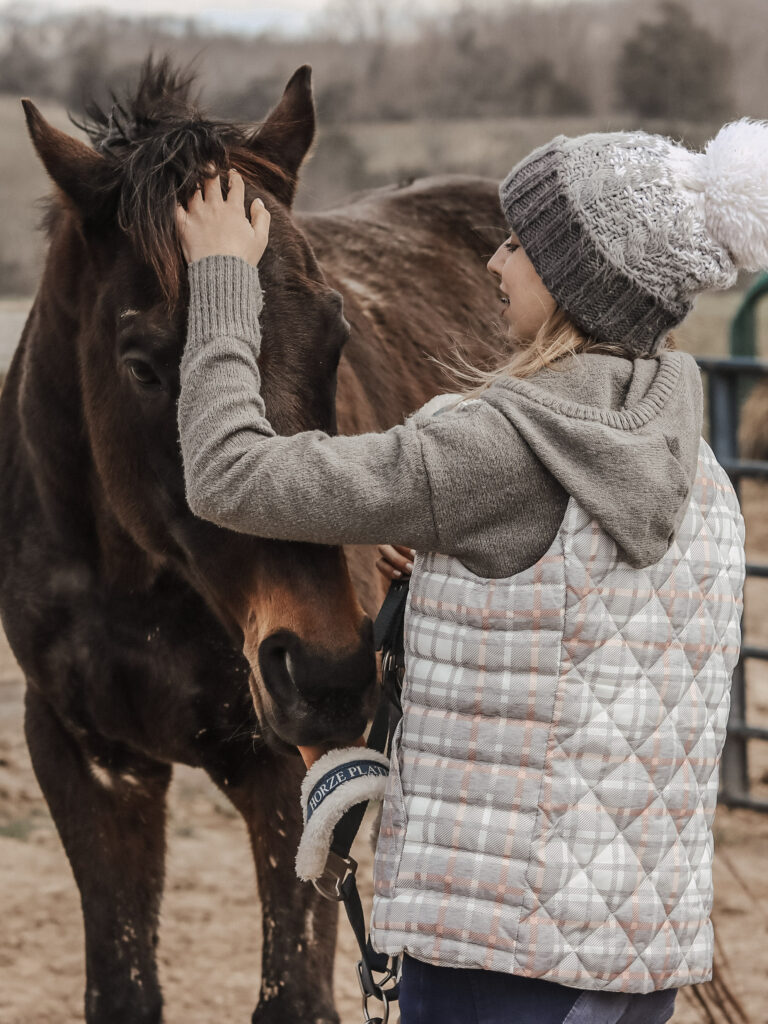
Luckily, it has grown out quite a bit since then; however, if you’re like me and absolutely hate winter and want to make it a little more carefree… here’s how to prepare your horse for winter!
This post contains affiliate links and I may make a profit from your purchase(s)
Prepare your horse for winter by understanding blanketing:
Let’s talk blanketing. It can be overwhelming when you’re going through all of the blankets for sale, wondering which is the best fit. I’ve been there, we’ve all been there.
There are many factors to consider when shopping for a blanket (if you even need a blanket) such as age, weight, environment, etc.
There are 4 major types of blankets: stable sheets, turnout sheets, stable blankets, and turnout blankets.
Personally, I had never put a blanket on my previous horse, Legend, but I do blanket my current horse, Theo. Legend was simply an easy keeper with a nice winter coat, whereas Theo is a hard keeper with a measly winter coat. These, of course, aren’t the only factors, but sometimes the route you should take is as plain as day.
Typically, if your unclipped horse has a decent winter coat, they will be fine without a blanket OR a lightweight blanket. However, even if you decide to do without the blanket, it would be wise to have a lightweight one on hand – just in case the temperature drops more than expected. Otherwise, don’t be surprised when your usually clean pony is caked in mud!
Make sure that you store your blankets in a dry environment and do not blanket a wet horse – wait for them to be completely dry.
Check out this blanket guide for more information!
Check out this Medium Weight Blanket!
Keeping weight on:
Wintertime has a knack for knocking that hard-earned weight off, doesn’t it? Sometimes horses will lose weight over the cold months due to low grass supply, shivering, etc. Trying to keep that weight on can be a headache if you don’t know the cause.
Start by making sure that your horse is being fed adequately. Up the hay intake if you’re running low on grass and/or feed intake if your horse is still in work. Your horse’s body worked really hard to grow that winter coat after all.
Check out these supplements: SmartPak SmartGrain and MannaPro Cool Calories!
Be sure to consult your vet before making any nutritional changes.
I would say more often than not, your horse might be shivering a night. Older horses, already thin ones, and hard keepers may have a hard time regulating their body temperatures. Make sure to do sufficient research on blanketing before writing it off completely.
Exercising your horse:
Much like humans, horses need a proper warm-up to defeat the risk of injury. Letting your horse get a good stretch before jumping into your typical routine is always a good idea!
Warm your horse up by starting with a few laps around the arena at a walk; long and low, collected, and a nice, swinging walk will ensure warmed up and stretched out muscles.
When trotting and canter: make sure to let them get a good stretch as well as walk breaks. It can be harder to breathe when the air is cold and frail after all.
Cooling down is just as important as warming up. We use cooling down (a loose walk) for restoring the horse’s natural heart rate, as well as minimizing stiff or sore muscles. I’ll typically cool down around the arena for 15-20 minutes after a hard lesson, making sure that my horse is breathing steady and that his muscles are no longer hot.
When you hop off and your horse is still sweaty, toss on a Cooler to draw out the moister and prevent your horse from catching a cold.
Prepare your horse for winter by going the extra mile:
At the end of the day, getting through winter as an equestrian consists of breaking ice in water buckets, and making sure that your horse stays fat and warm. But going the extra mile for your horse would be appreciated, I’m sure!
You’ll catch me sitting in front of a heater so I don’t have to put a cold bit into my horse’s mouth; but if you want to save time, check out this Homemade Bit Warmer!
An exercise rug for the clipped horse is nice for chilly days. I love this exercise rug from Basics Equestrian!
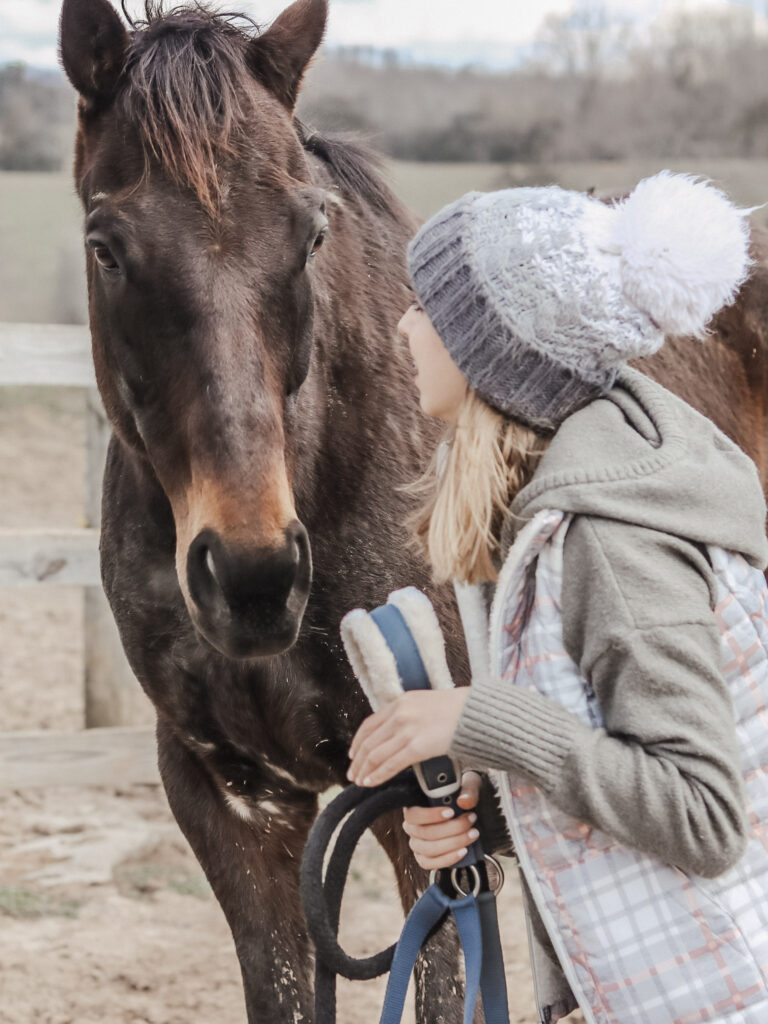
And there ya have it, folks! Though winter isn’t always a walk in the park, there are definitely ways to make your job a little easier while keeping your horse healthy and safe! Remember to have fun with your horse… go for a trail ride if it’s too chilly to jump ; -)
All the best,
Laura
New here? Get to know me!
Want more? Follow me on Instagram!

